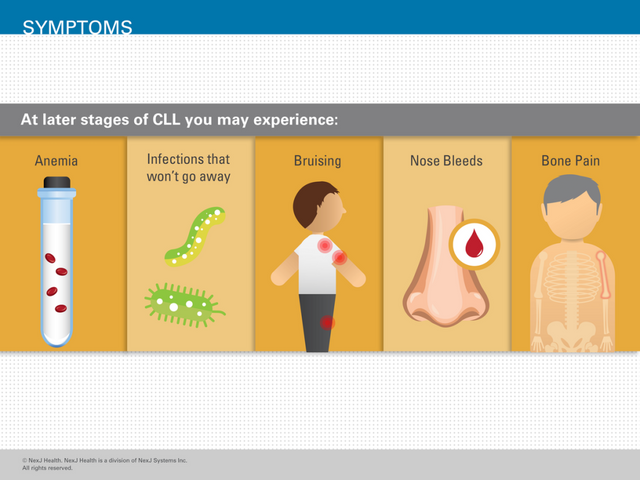68-year-old male with a history of chronic lymphocytic leukemia presents for follow-up with his oncologist...

A 68-year-old male with a history of chronic lymphocytic leukemia presents for follow-up with his oncologist. On review of symptoms the patient reports worsening fatigue and a recent fever that has persisted for one weeks' duration. He denies sick contacts, weight loss, or night sweats. Physical examination reveals enlarged, fixed axillary and abdominal lymph nodes. Lymph node biopsy reveals a monotonous infiltrate of small lymphocytes on one side with a pattern of diffuse large cells on the right.
The most likely explanation for these findings is
- acute myelogenous leukemia
- benign leukemoid reaction
- infectious mononucleosis
- progressive chronic lymphocytic leukemia
- Richter's transformation
Richter’s transformation (RT) is a complication of chronic lymphocytic leukemia (CLL) or less commonly, Hairy cell leukemia, into a diffuse large B cell lymphoma.
Diffuse large B-cell lymphoma is the most common type of Non-Hodgkin’s lymphoma.
RT should be suspected in patients with CLL who develop worsening B symptoms
Biopsy is required to make the diagnosis and histologic pattern exhibits diffuse large B cells.
In this patient, the biopsy shows the pre-existing CLL, represented by the small lymphocytes, next to diffuse large B cells, which characterizes the transformation of CLL into a large B cell lymphoma.